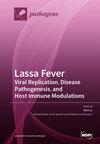Contributions of Long-Read Sequencing for the Detection of Antimicrobial Resistance
IF 3.3
3区 医学
Q2 MICROBIOLOGY
引用次数: 0
Abstract
Background. In the context of increasing antimicrobial resistance (AMR), whole-genome sequencing (WGS) of bacteria is considered a highly accurate and comprehensive surveillance method for detecting and tracking the spread of resistant pathogens. Two primary sequencing technologies exist: short-read sequencing (50–300 base pairs) and long-read sequencing (thousands of base pairs). The former, based on Illumina sequencing platforms (ISPs), provides extensive coverage and high accuracy for detecting single nucleotide polymorphisms (SNPs) and small insertions/deletions, but is limited by its read length. The latter, based on platforms such as Oxford Nanopore Technologies (ONT), enables the assembly of genomes, particularly those with repetitive regions and structural variants, although its accuracy has historically been lower. Results. We performed a head-to-head comparison of these techniques to sequence the K. pneumoniae VS17 isolate, focusing on blaNDM resistance gene alleles in the context of a surveillance program. Discrepancies between the ISP (blaNDM-4 allele identified) and ONT (blaNDM-1 and blaNDM-5 alleles identified) were observed. Conjugation assays and Sanger sequencing, used as the gold standard, confirmed the validity of ONT results. This study demonstrates the importance of long-read or hybrid assemblies for accurate carbapenemase resistance gene identification and highlights the limitations of short reads in the context of gene duplications or multiple alleles. Conclusions. In this proof-of-concept study, we conclude that recent long-read sequencing technology may outperform standard short-read sequencing for the accurate identification of carbapenemase alleles. Such information is crucial given the rising prevalence of strains producing multiple carbapenemases, especially as WGS is increasingly used for epidemiological surveillance and infection control.长读测序对检测抗菌药耐药性的贡献
背景。在抗菌药耐药性(AMR)不断增加的背景下,细菌全基因组测序(WGS)被认为是检测和追踪耐药性病原体传播的一种高度准确和全面的监测方法。目前主要有两种测序技术:短线程测序(50-300 个碱基对)和长线程测序(数千个碱基对)。前者以 Illumina 测序平台(ISPs)为基础,覆盖范围广、准确度高,可检测单核苷酸多态性(SNPs)和小的插入/缺失,但受限于其读数长度。后者以牛津纳米孔技术公司(ONT)等平台为基础,能够组装基因组,尤其是那些具有重复区域和结构变异的基因组,但其准确性历来较低。结果我们对这些技术进行了正面比较,对肺炎克雷伯菌 VS17 分离物进行了测序,重点是监测计划中的 blaNDM 耐药基因等位基因。我们发现 ISP(鉴定出 blaNDM-4 等位基因)和 ONT(鉴定出 blaNDM-1 和 blaNDM-5 等位基因)之间存在差异。作为金标准的共轭测定和 Sanger 测序证实了 ONT 结果的有效性。这项研究表明了长读数或混合组装对准确鉴定碳青霉烯酶耐药基因的重要性,并强调了短读数在基因重复或多等位基因情况下的局限性。结论。在这项概念验证研究中,我们得出结论:在准确鉴定碳青霉烯酶等位基因方面,最新的长读程测序技术可能优于标准的短读程测序技术。鉴于产生多种碳青霉烯酶的菌株发病率不断上升,尤其是 WGS 越来越多地用于流行病学监测和感染控制时,此类信息至关重要。
本文章由计算机程序翻译,如有差异,请以英文原文为准。
求助全文
约1分钟内获得全文
求助全文
来源期刊

Pathogens
Medicine-Immunology and Allergy
CiteScore
6.40
自引率
8.10%
发文量
1285
审稿时长
17.75 days
期刊介绍:
Pathogens (ISSN 2076-0817) publishes reviews, regular research papers and short notes on all aspects of pathogens and pathogen-host interactions. There is no restriction on the length of the papers. Our aim is to encourage scientists to publish their experimental and theoretical research in as much detail as possible. Full experimental and/or methodical details must be provided for research articles.
 求助内容:
求助内容: 应助结果提醒方式:
应助结果提醒方式:


